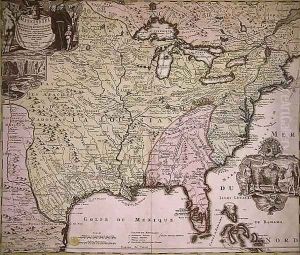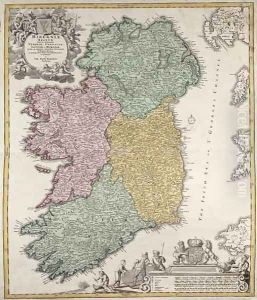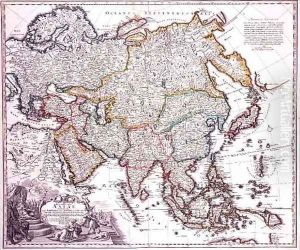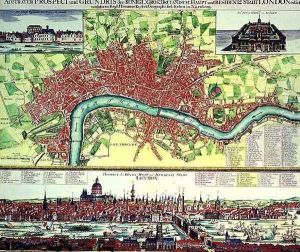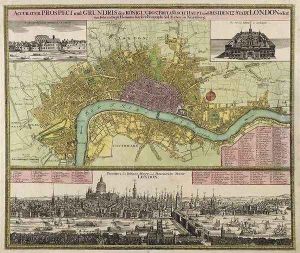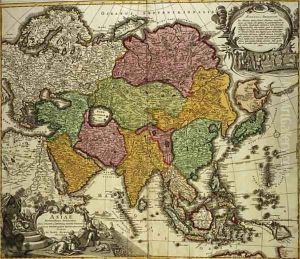Johann Baptist Homann Paintings
Johann Baptist Homann was a renowned German geographer and cartographer, who made significant contributions to the cartography of the late 17th and early 18th centuries. Born in Oberkammlach in the Electorate of Bavaria on March 20, 1664, Homann initially pursued a religious career. He was educated at a Jesuit school in Augsburg and later joined a Benedictine monastery. However, he abandoned the religious path around 1687 and instead turned his attention to engraving and cartography.
In 1702, Homann established his own publishing house in Nuremberg, which became known as the Homann Heirs (Homännische Erben) after his death. He was appointed Imperial Geographer by Emperor Charles VI in 1715, a recognition of his work and influence. Homann's maps were highly regarded for their detail, accuracy, and artistic style. They contributed to the dissemination of geographic knowledge during a time when exploration and the scientific revolution were changing Europeans' understanding of the world.
Homann published his first major work, the 'Atlas Novus Terrarum Orbis Imperia, Regna et Status' (New Atlas of the Kingdoms and States of the World), in 1707. This atlas and his subsequent maps and atlases were widely circulated and used for both educational purposes and as tools for navigation and trade. Among his most famous works are the 'Grosser Atlas ueber die ganze Welt' (Grand Atlas of the entire World) and the 'Homann Heirs' maps, which continued to be published by his successors well into the 18th century.
Johann Baptist Homann died on July 1, 1724, in Nuremberg. His legacy was carried on by his family and collaborators, who continued to run the Homann publishing house and release updated and expanded map collections. The business operated until the 19th century, maintaining its reputation for quality and remaining influential in the world of cartography and geographic education. Homann's work is still highly regarded by collectors and historians for its historic value and beauty.
